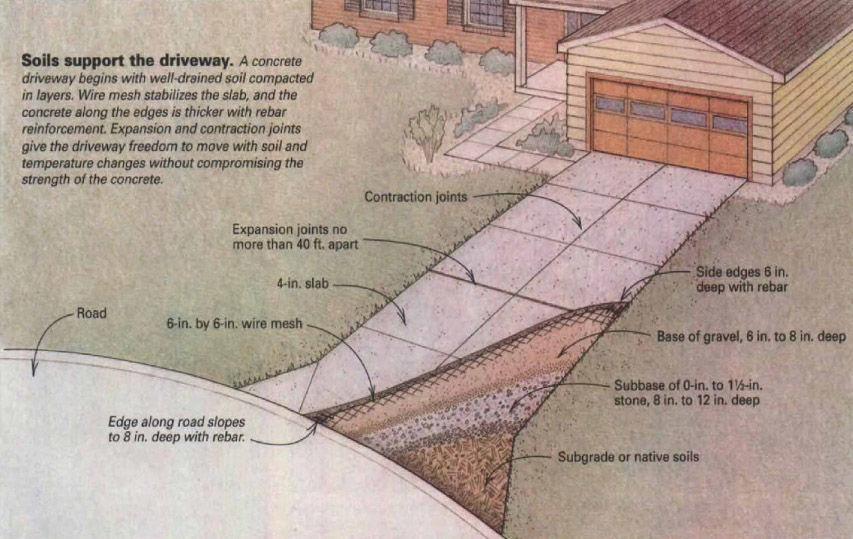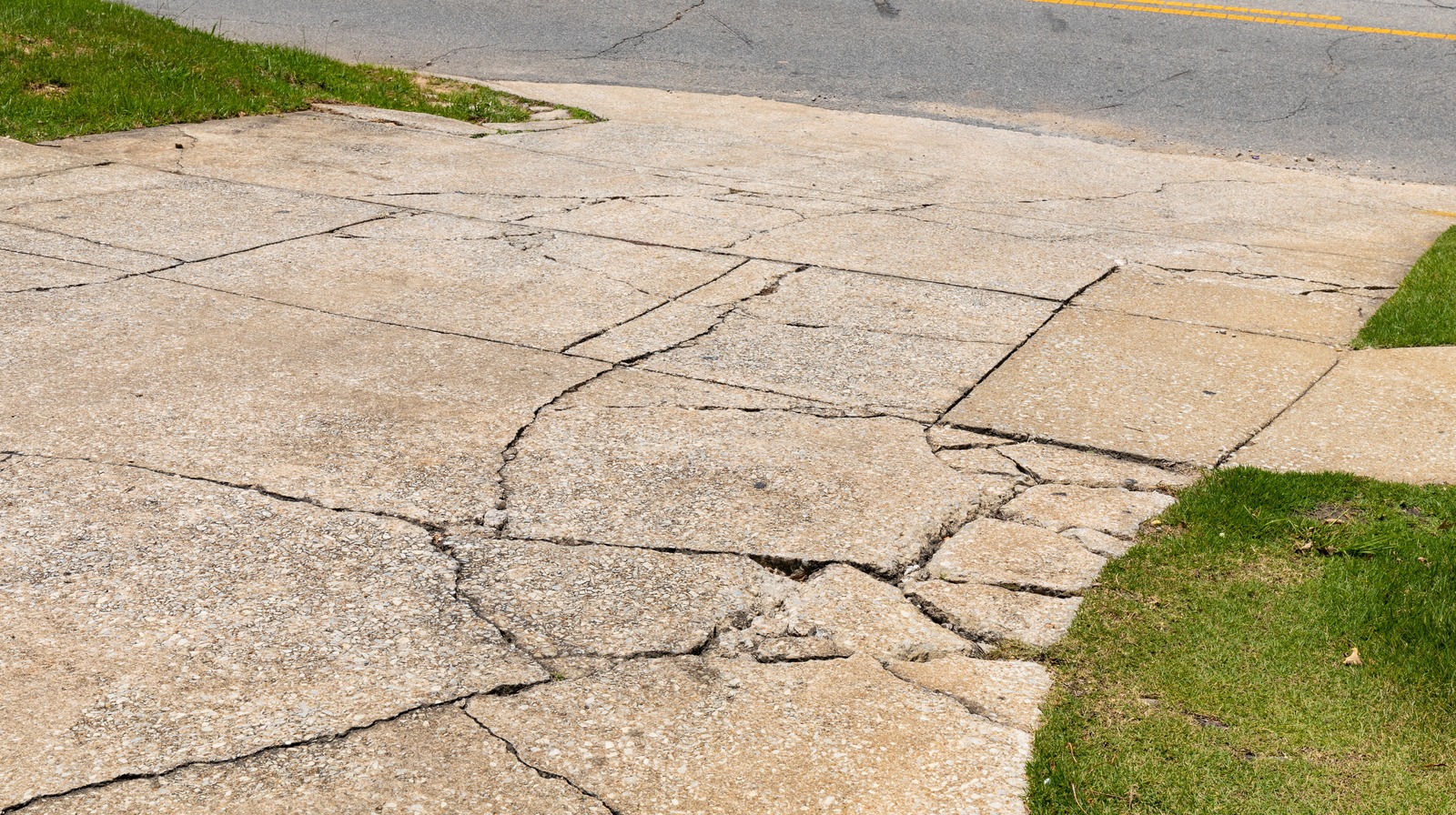From Idea to Completion: Partnering with a Premier Concrete Contractor
From Idea to Completion: Partnering with a Premier Concrete Contractor
Blog Article
The Green Choice: Concrete Sidewalks for Your Area
Concrete walkways are a common function in a lot of areas, yet their influence on the setting is frequently overlooked. Choosing concrete for your community walkways can make a considerable distinction in terms of sustainability and eco-friendliness. The advantages of opting for concrete surpass mere aesthetic appeals and functionality. By taking into consideration the environmental advantages and long-term impacts on the neighborhood, the selection of products for walkways comes to be an essential choice. Let's check out why concrete walkways could be the green selection your neighborhood requires.
Advantages of Concrete Sidewalks
When thinking about the installation of sidewalks in a community, the advantages of picking concrete over various other materials are numerous and substantial. Concrete sidewalks supply sturdiness, withstanding hefty foot traffic, climate changes, and environmental elements better than alternate materials like asphalt or gravel. This long life translates to cost-effectiveness in the long run, as concrete pathways call for less frequent fixings and upkeep. Furthermore, concrete is a versatile material that can be conveniently personalized to complement the visual of any kind of area through various surfaces, shades, and patterns.

Resilience and Longevity
How can concrete sidewalks surpass other materials in terms of sturdiness and longevity? Concrete sidewalks are renowned for their outstanding sturdiness and longevity compared to alternate products like asphalt or pavers. The inherent stamina of concrete makes it very resistant to cracking, moving, and basic damage triggered by foot traffic, weather changes, and other environmental factors. Unlike asphalt, which can soften in heats and fracture in cold conditions, concrete keeps its structural honesty, requiring minimal maintenance over time.
In addition, concrete's resilience reduces the need for constant fixings or substitutes, making it a affordable and sustainable option for area walkways. By investing in concrete sidewalks, communities can appreciate a durable and trustworthy framework that boosts the total visual appeal and functionality of the location.
Reduced Maintenance Demands
Concrete sidewalks stand out for their minimal upkeep demands as a result of their resilient nature and durable performance. Unlike different materials that may need constant repairs or substitutes, concrete pathways provide an affordable remedy that demands little maintenance over time. One of the essential benefits of concrete pathways is their resistance to weathering and erosion. This means they can endure rough weather problems, heavy foot web traffic, and other environmental variables without deteriorating quickly.
Regular upkeep for concrete pathways usually involves easy tasks such as normal cleaning to eliminate debris and occasional sealing to protect the surface area. In comparison to products like asphalt or pavers that might move, fracture, or weaken more quickly, concrete sidewalks preserve their architectural stability with very little intervention. Furthermore, any kind of fixings that might be needed are generally local and can be addressed quickly, minimizing both the time and expense related to maintenance.

Ecological Benefits
With a concentrate on sustainability and eco-friendliness, concrete walkways use remarkable ecological benefits that add to a greener neighborhood framework. Concrete is a product known for its sturdiness and long life, reducing the requirement for regular replacements. This longevity reduces the environmental influence connected with the production and transport of new products for walkway building. Furthermore, concrete pathways have a high solar reflectance index, suggesting they mirror a substantial quantity of sunshine rather than maintaining and soaking up warm. This quality helps minimize the urban heat island result, decreasing energy usage for cooling buildings and enhancing general convenience in metropolitan locations.
Moreover, concrete is a porous product that allows water to penetrate into the ground, lowering stormwater overflow and aiding in groundwater recharge. This aids protect against disintegration, reduce flooding, and preserve the all-natural equilibrium of water supply in the area. By picking concrete walkways, communities can make a lasting selection that positively impacts the setting and boosts the top quality of life for homeowners.
Enhancing Area Sustainability
By prioritizing lasting framework options, areas can cultivate an unified equilibrium between ecological additional resources awareness and community advancement. Enhancing community sustainability involves a complex strategy that surpasses just the environmental advantages of concrete walkways. Executing eco-friendly rooms, promoting energy-efficient practices, and cultivating a feeling of community involvement are vital elements of producing a sustainable area.
One means to improve community sustainability is with the integration of permeable concrete walkways. These sidewalks permit rainwater to seep right into the ground, reducing stormwater runoff and minimizing the pressure on municipal drainage systems. Click Here. By including absorptive walkways, communities can enhance water quality, reduce flooding dangers, and improve overall environmental strength
Moreover, promoting different transportation approaches such as strolling and cycling can substantially decrease carbon emissions and advertise a healthier lifestyle amongst citizens. Creating secure pedestrian pathways, bike lanes, and assigned greenways can motivate citizens to rely less on vehicles, even more contributing to the neighborhood's sustainability objectives.
Verdict
In conclusion, concrete sidewalks supply many advantages for neighborhoods, consisting of resilience, reduced upkeep needs, and ecological advantages. By selecting concrete walkways, neighborhoods can improve their sustainability and add to a more environment-friendly atmosphere. It is clear that concrete sidewalks are the ideal option for areas looking to improve their framework in a ecologically friendly and resilient way.
When taking into consideration the installment of walkways in a neighborhood, the advantages of selecting concrete over try this website other materials are various and considerable. Additionally, concrete's longevity decreases the demand for frequent repair work or substitutes, making it a cost-efficient and lasting selection for community pathways (Concrete Contractor).With an emphasis on sustainability and eco-friendliness, concrete walkways use notable ecological advantages that contribute to a greener area infrastructure. Enhancing community sustainability includes a diverse method that goes beyond here just the ecological advantages of concrete pathways.In final thought, concrete walkways offer countless benefits for neighborhoods, including toughness, reduced upkeep needs, and environmental benefits
Report this page